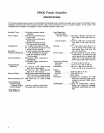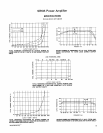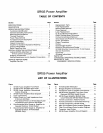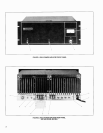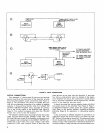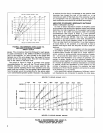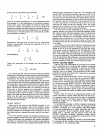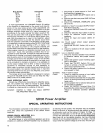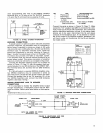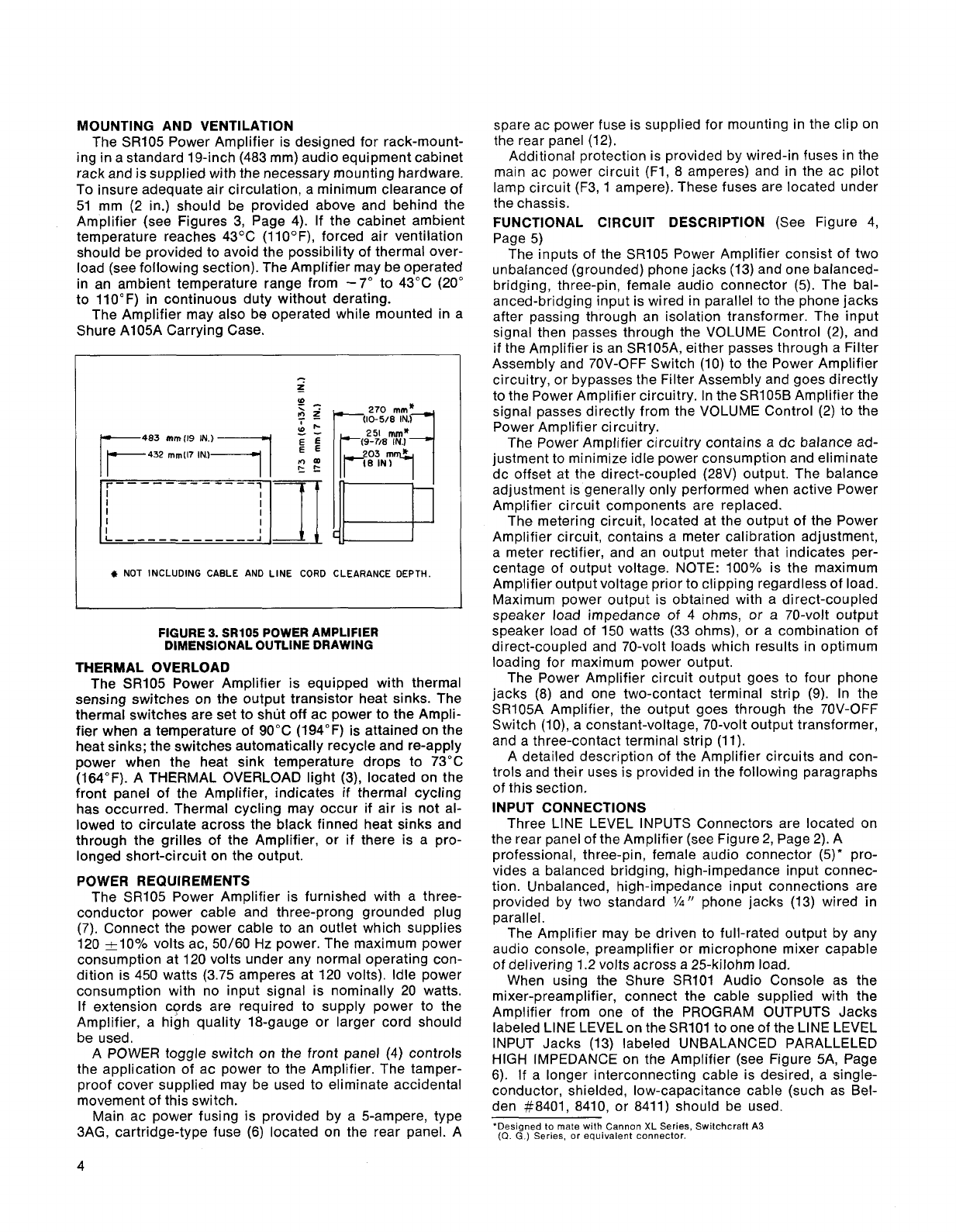
MOUNTING AND VENTILATION
The SR105 Power Amplifier is designed for rack-mount-
ing in a standard 19-inch (483 mm) audio equipment cabinet
rack and is supplied with the necessary mounting hardware.
To insure adequate air circulation, a minimum clearance of
51 mm (2 in.) should be provided above and behind the
Amplifier (see Figures 3, Page 4). If the cabinet ambient
temperature reaches
43OC (llO°F), forced air ventilation
should be provided to avoid the possibility of thermal over-
load (see following section). The Amplifier may be operated
in an ambient temperature range from
-7"
to 43°C (20"
to 110°F) in continuous duty without derating.
The Amplifier may also be operated while mounted in a
Shure
A105A Carrying Case.
P,
.
.
270
mm'
?
-00-518 IN.)-
I
*
NOT INCLUDING CABLE AND LlNE CORD CLEARANCE DEPTH.
I
FIGURE
3.
SR105 POWER AMPLIFIER
DIMENSIONAL OUTLINE DRAWING
THERMAL OVERLOAD
The SR105 Power Amplifier is equipped with thermal
sensing switches on the output transistor heat sinks. The
thermal switches are set to sh~it off ac power to the Ampli-
fier when a temperature of 90°C (194°F) is attained on the
heat sinks; the switches automatically recycle and re-apply
power when the
heat sink temperature drops to 73°C
(164°F). A THERMAL OVERLOAD light
(3),
located on the
front panel of the Amplifier, indicates if thermal cycling
has occurred. Thermal cycling may occur if air is not al-
lowed to circulate across the black finned heat sinks and
through the grilles of the Amplifier, or if there is a pro-
longed short-circuit on the output.
POWER REQUIREMENTS
The SR105 Power Amplifier is furnished with a three-
conductor power cable and three-prong grounded plug
(7). Connect the power cable to an outlet which supplies
120
~10% volts ac, 50160
Hz
power. The maximum power
consumption at 120 volts under any normal operating con-
dition is 450 watts (3.75 amperes at 120 volts).
Idle power
consumption with no input signal is nominally 20 watts.
If extension cords are required to supply power to the
Amplifier, a high quality 18-gauge or larger cord should
be used.
A POWER toggle switch on the front panel
(4)
controls
the application of ac power to the Amplifier. The
tamper-
proof cover supplied may be used to eliminate accidental
movement of this switch.
Main ac power fusing is provided by a 5-ampere, type
3AG, cartridge-type fuse (6) located on the rear panel. A
spare ac power fuse is supplied for mounting in the clip on
the rear panel (12).
Additional protection is provided by wired-in fuses in the
main ac power circuit (FI, 8 amperes) and in the ac pilot
lamp circuit (F3, 1 ampere). These fuses are located under
the chassis.
FUNCTIONAL CIRCUIT DESCRIPTION
(See Figure 4,
Page 5)
The inputs of the
SR105 Power Amplifier consist of two
unbalanced (grounded) phone jacks (13) and one balanced-
bridging, three-pin, female audio connector (5). The bal-
anced-bridging input is wired in parallel to the phone jacks
after passing through an isolation transformer. The input
signal then passes through the VOLUME Control
(2), and
if the Amplifier is an
SR105A, either passes through a Filter
Assembly and 70V-OFF Switch (10) to the Power Amplifier
circuitry, or bypasses the Filter Assembly and goes directly
to the Power Amplifier circuitry. In the
SR105B Amplifier the
signal passes directly from the VOLUME Control (2) to the
Power Amplifier circuitry.
The Power Amplifier circuitry contains a dc balance ad-
justment to minimize idle power consumption and eliminate
dc offset at the direct-coupled
(28V) output. The balance
adjustment is generally only performed when active Power
Amplifier circuit components are replaced.
The metering circuit, located at the output of the Power
Amplifier circuit, contains a meter calibration adjustment,
a meter rectifier, and an output meter that indicates per-
centage of output voltage. NOTE: 100% is the maximum
Amplifier output voltage prior to clipping regardless of load.
Maximum power output is obtained with a direct-coupled
speaker load impedance of 4 ohms, or a 70-volt output
speaker load of 150 watts (33 ohms), or a combination of
direct-coupled and 70-volt loads which results in optimum
loading for maximum power output.
The Power Amplifier circuit output goes to four phone
jacks (8) and one two-contact terminal strip (9). In the
SR105A Amplifier, the output goes through the 70V-OFF
Switch
(lo), a constant-voltage, 70-volt output transformer,
and a three-contact terminal strip (1 1).
A detailed description of the Amplifier circuits and con-
trols and their uses is provided in the following paragraphs
of this section.
INPUT CONNECT IONS
Three LlNE LEVEL INPUTS Connectors are located on
the rear panel of the Amplifier (see Figure 2, Page 2). A
professional, three-pin, female audio connector
(5)*
pro-
vides a balanced bridging, high-impedance input connec-
tion. Unbalanced, high-impedance input connections are
provided by two standard
1/4"
phone jacks (13) wired in
parallel.
The Amplifier may be driven to full-rated output by any
audio console, preamplifier or microphone mixer capable
of delivering 1.2 volts across a 25-kilohm load.
When using the Shure
SR101 Audio Console as the
mixer-preamplifier, connect the cable supplied with the
Amplifier from one of the PROGRAM OUTPUTS Jacks
labeled LlNE LEVEL on the
SR101 to one of the LlNE LEVEL
INPUT Jacks (13) labeled UNBALANCED PARALLELED
HIGH IMPEDANCE on the Amplifier (see Figure 5A, Page
6). If a longer interconnecting cable is desired, a
single-
conductor, shielded, low-capacitance cable (such as Bel-
den #8401, 8410, or 8411) should be used.
'Des~gned to mate with Cannon
XL
Ser~es, Sw~tchcraft
A3
(0
G
)
Series, or
equivalent
connector



